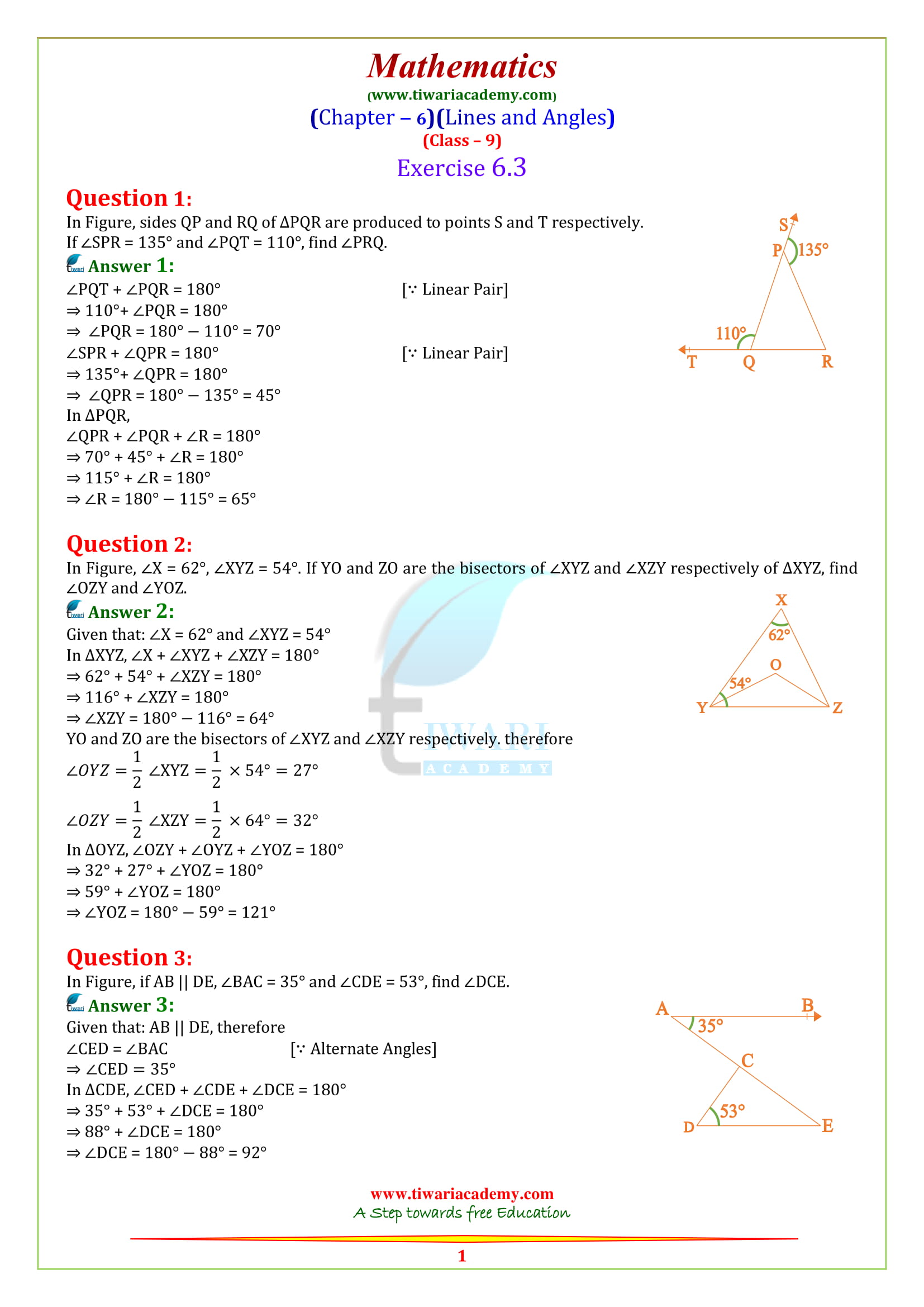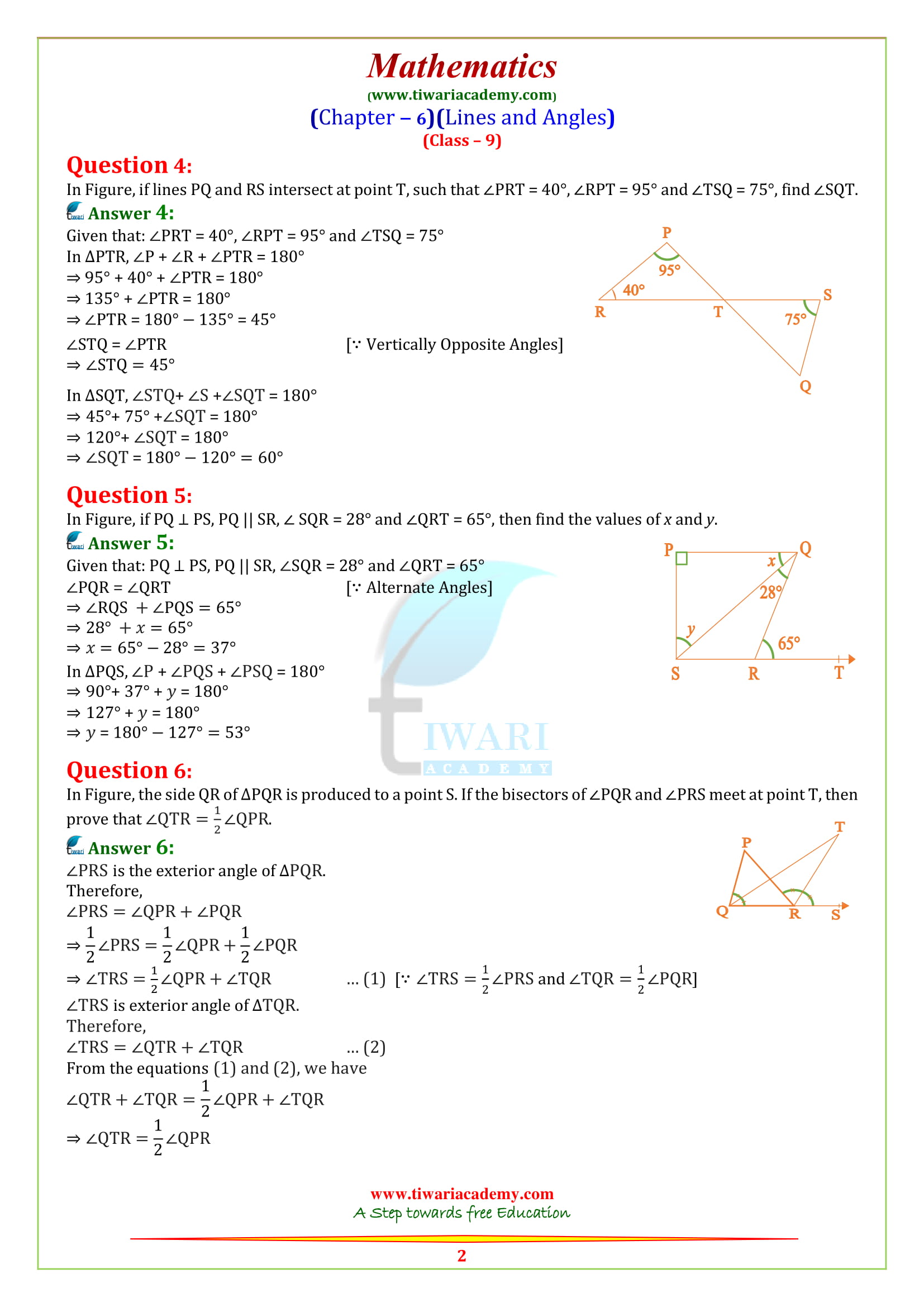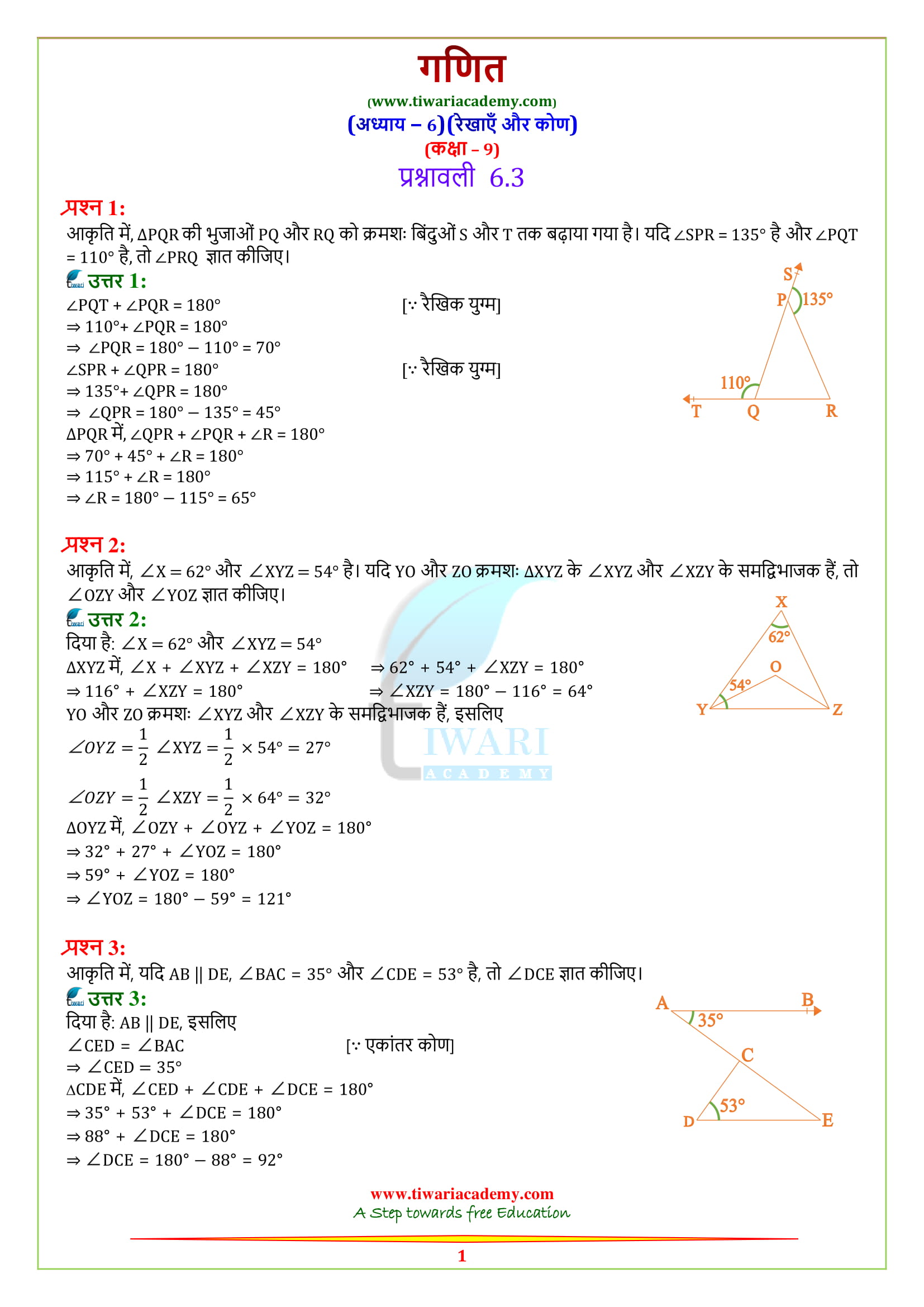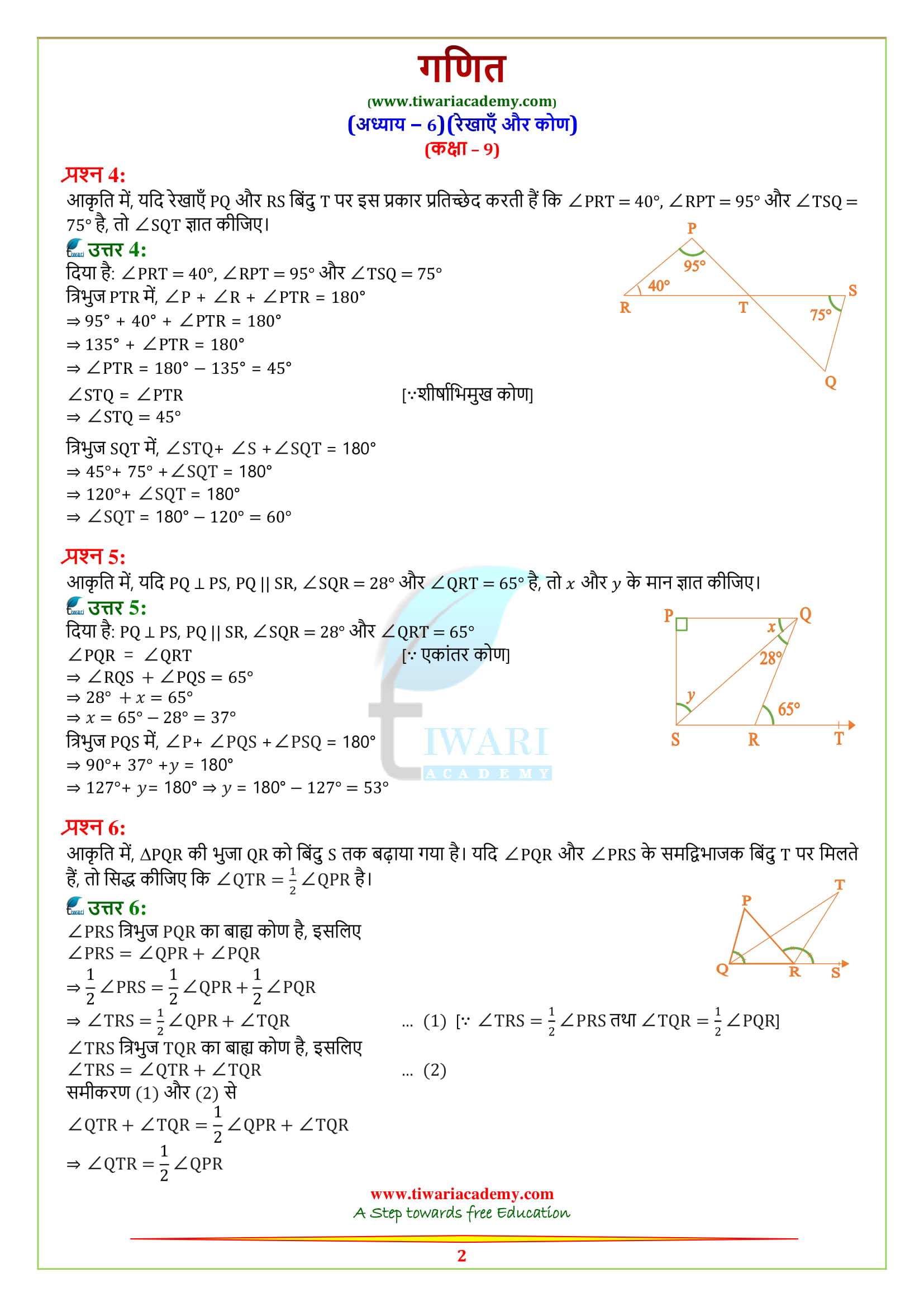NCERT Solutions for Class 9 Maths Chapter 6 Exercise 6.3 Lines and Angles in Hindi Medium and English Medium for CBSE and State Boards students. Explore detailed NCERT solutions for Class 9 Maths, Chapter 6, Exercise 6.3 on Lines and Angles, suitable for CBSE and State Boards. Available in Hindi and English.
Class 9 Maths Chapter 6 Exercise 6.3 Solution in Hindi and English
In the UP Board and MP Board, students are now using NCERT Textbooks are course book. So, UP Board and MP board students also take the benefits of exercise 6.3 solutions of class 9 Maths. Get here the mathematics videos solutions in Hindi and English Medium using the easy language for the explanation.
| Class: 9 | Mathematics |
| Chapter: 6 | Exercise: 6.3 |
| Topic: | Lines and Angles |
| Mode: | Text and Videos |
| Medium: | English and Hindi Medium |
Class 9 Maths Exercise 6.3 Solution in Hindi Medium Video
Distance between parallel lines
The lengths of the common perpendiculars at different points on these parallel lines is the same. This equal length is called the distance between two parallel lines. You have learnt the definitions of some of the pairs of angles such as complementary angles, supplementary angles, adjacent angles, linear pair of angles, etc. In 9th Mathematics NCERT (https://ncert.nic.in/) Book exercise 6.3, students will see various examples and practice questions based on these concepts.
If a transversal cuts two lines which are parallel, then
- Any pair of related angles is the same, or
- Any pair of alternate interior angles is the same, or
- Any pair of internal angles on the same side of the transversal is complementary, so the lines are parallel.
Angles Sum Property of a Triangle
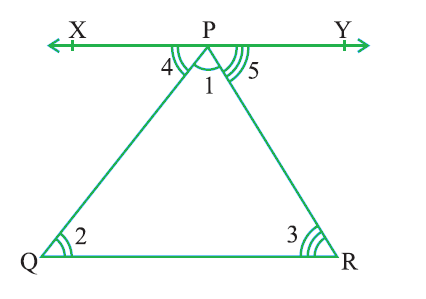
The sum of the angles of a triangle is 180º. Proof: We are given a triangle PQR and ∠ 1, ∠ 2 and ∠ 3 are the angles of Δ PQR. We need to prove that ∠ 1 + ∠ 2 + ∠ 3 = 180°. Let us draw a line XPY parallel to QR through the opposite vertex P, as shown in Fig. 6.35, so that we can use the properties related to parallel lines. Now, XPY is a line. Therefore, ∠ 4 + ∠ 1 + ∠ 5 = 180° …… (1) But XPY || QR and PQ, PR are transversal. So, ∠ 4 = ∠ 2 and ∠ 5 = ∠ 3 (Pairs of alternate angles) Substituting ∠ 4 and ∠ 5 in (1),
We get ∠ 2 + ∠ 1 + ∠ 3 = 180°
That is,
∠ 1 + ∠ 2 + ∠ 3 = 180°
If a line which intersects two or more lines at distinct points is called a transversal. Interior angles on the same side of the transversal are also referred to as consecutive interior angles or allied angles or co-interior angles. If a transversal intersects two lines such that a pair of corresponding angles is equal, then the two lines are parallel. If a transversal intersects two lines such that a pair of corresponding angles is equal, then the two lines are parallel to each other.
Which theorems play an important role in the questions of exercise 6.3 of class 9th Maths?
There are eight theorems in chapter 6 of class 9th Maths. Theorem 6.7 “The sum of the angles of a triangle is 180°” and Theorem 6.8 “If a side of a triangle is produced, then the exterior angle so formed is equal to the sum of the two interior opposite angles” play an important role in the questions of exercise 6.3 of class 9th Maths.
What are the main concepts on which exercise 6.3 of class 9 Maths based?
CBSE Class 9 Maths Exercise 6.3 is based mainly on angle sum property of triangle and exterior angle property.
How can students take good marks in exercise 6.3 (chapter 6) of grade 9th Maths?
Exercise 6.3 of class 9th Maths contains two examples (examples 7, 8) and 6 questions. Questions 5, 6, and example 8 of this exercise are most important from the exam point of view. So, to get good marks in exercise 6.3 of grade 9th Maths, students should practice these questions and examples honestly. These questions can come in 3 to 6 marks in the exams.
Which example is most important for exercise 6.3 of 9th Maths?
Example 8 given on page number 106 is the most important example not only for exercise 6.3 but for the entire chapter 6 of CBSE Class 9 Maths.
Which sums of exercise 6.3 of grade 9th Maths, students solve rapidly and without any problem?
Students solve example 7 and questions 1, 2, 3, 4, 5 of exercise 6.3 of grade 9th Maths rapidly and without any problem because these sums are good, easy, and straightforward. Also, the solutions to these questions are very short.
Which is the most important question in exercise 6.3 of 9th Maths?
Question 6 Which is the last question of exercise as well as chapter 6, is most important for all exams and school tests. It is easy to understand but difficult to learn.
Which questions of exercise 6.3 of class 9th Maths, students find the most complicated to solve?
Students find example 8 and question 6 of exercise 6.3 of class 9th Maths as the most complicated questions to solve because these are the proving questions, and most of the students face difficulty in these types of questions.
Which section is deleted from chapter 6 exercise 6.3 due to COVID-19?
There is not any deletion from chapter 6. Every question is important from chapter 6 of class 9 Maths.
Can students prepare exercise 6.3 of grade 9th Maths for school exams in 2 days?
Students can prepare exercise 6.3 of grade 9th Maths for school exams in 2 days or not depends on student’s working speed, efficiency, capability, and many other factors. But if they try to prepare exercise 6.3 of class 9th Maths in 2 days, they can do that.
